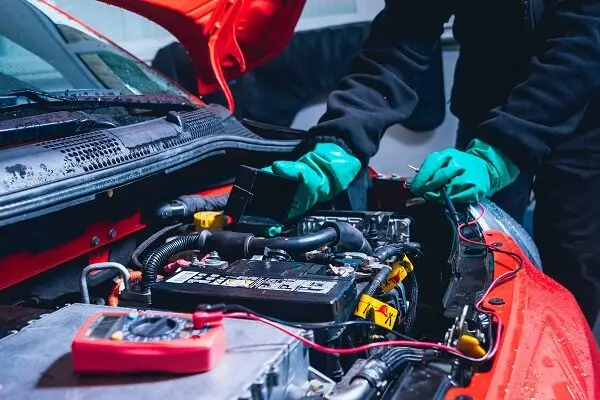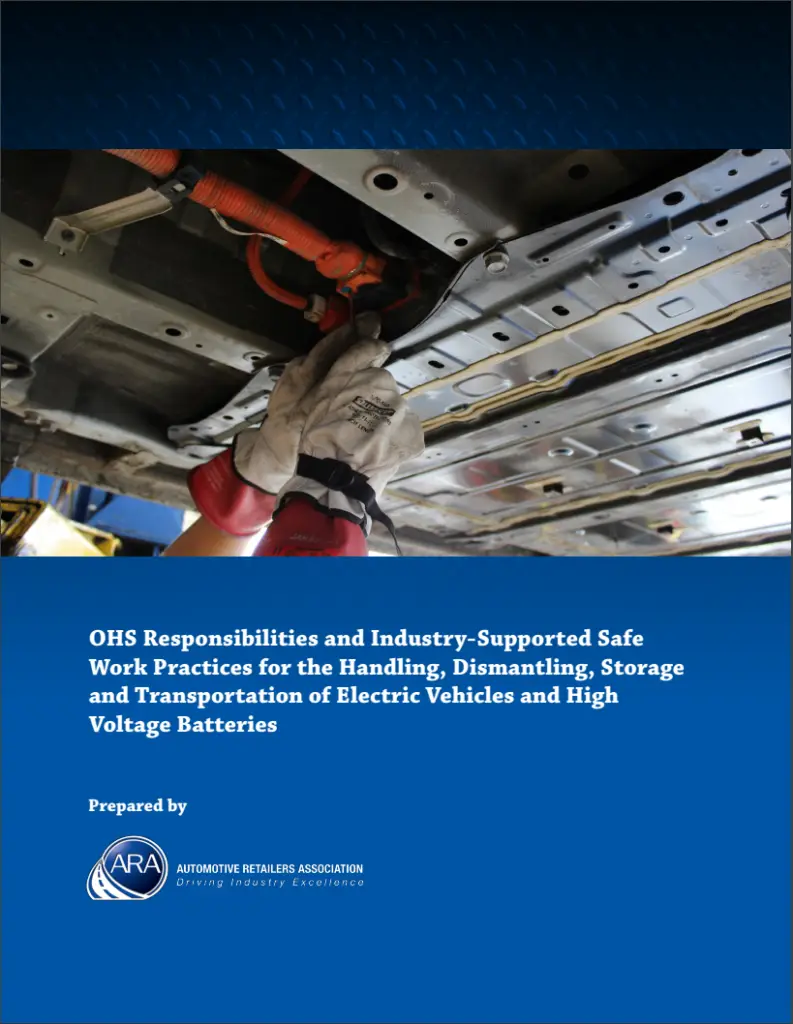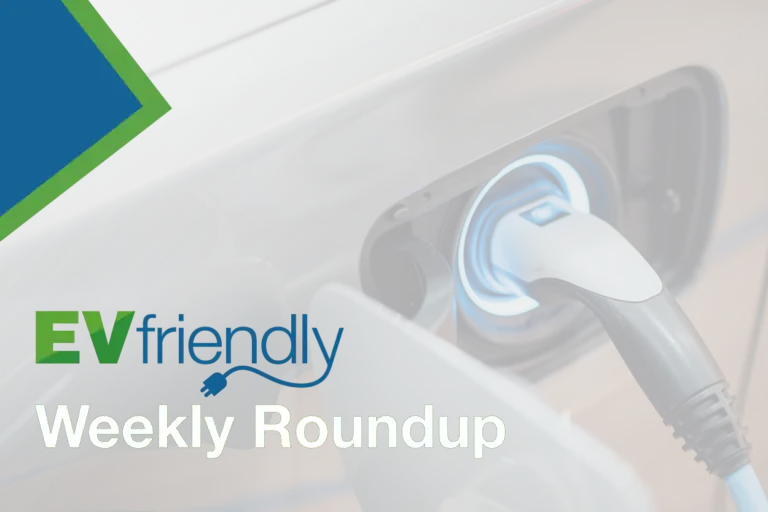Reprinted with permission from Speaking of Safety
As the use of electric vehicles (EVs) increases, safety advocates are looking at how to improve safety for workers who tow, recover, and recycle them.
EVs are powered by high-voltage lithium-ion (li-ion) batteries that, when damaged, can short circuit, catch fire, and explode.
Recently, I spoke with Percy (Prescillia) Chua, a manager in WorkSafeBC’s Risk Analysis Unit (RAU) about the hazards of working with EVs and their batteries.
Electric vehicle risks can affect workers in many industries
“It’s not widely known that there are risks when damaged electric cars and their batteries are towed, repaired, or recycled,” Percy says. She adds that it’s important to raise awareness of these risks and of employers’ safety responsibilities.
A damaged EV can be touched by workers in many industries. First responders, tow truck operators, auto repair technicians, body shop personnel, recycling facility staff, insurance damage estimators, and vehicle operators can all play a role in recovering, repairing, or recycling the vehicle. That means they can also be exposed to the risks.
“All lithium-ion batteries have a residual charge that, even when the battery seems to be dead, can be a risk to workers in terms of a fire or electrical hazard,” notes Mukesh Sharma, an occupational hygiene officer in RAU, in The evolution of electric vehicle safety (May/June 2021 issue of WorkSafe Magazine). The same article cites the example of a plug-in hybrid SUV that rolled into the ocean at a boat launch in B.C. The vehicle burst into flames after it was towed from the water, likely due to a short in the battery caused by salt water damage.
Percy explains that EV battery fires can be difficult to extinguish because the damaged batteries might reignite long after the initial fires appear to have been put out. Burning batteries pose a risk to workers by releasing toxic substances. Damaged batteries can release harmful chemicals too, through cracks, leaks, or evaporation.
Workers are also at risk of electric shock or burns if compromised electric propulsion systems energize the vehicle body, components, or surroundings.
Controlling risks at different stages
Risk controls, says Percy, depend on the stage of the vehicle recovery, repair, or recycling process. Here are some ways you can control workplace hazards caused by EVs:
- Use new technology fire extinguishers that are approved to extinguish lithium-ion fires.
- When towing, prevent re-energization of an EV’s battery via the battery disconnect switch, use a flatbed tow truck, and lock the EV’s wheels to prevent rotation.
- Avoid electric shock by wearing boots and gloves with the appropriate electrical classification when handling EVs.
- Prevent inhaling unsafe levels of chemical vapours from damaged batteries by using gas detection sensors and a self-contained breathing apparatus.
Percy recommends the EV guidelines and safe work practices manual from the Automotive Retailers Association (ARA) for much more information about how to safely handle, dismantle, and transport EVs and high-voltage batteries.
Thanks to Percy for talking with me about EVs — and thanks also to the people who do this important work on which we rely so much.







